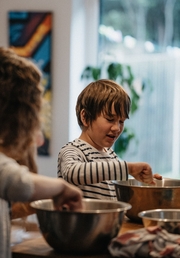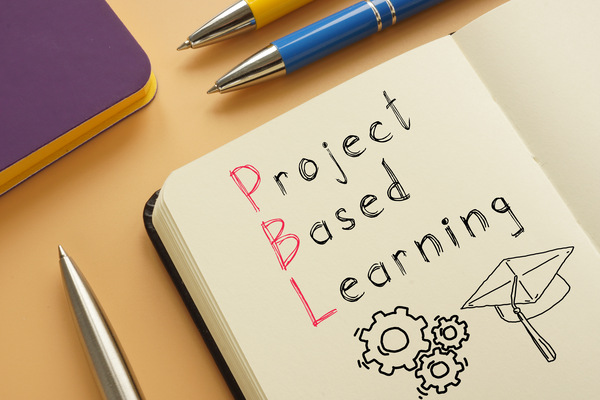Is your child a little shy? Do they suffer from a lack of self-esteem? It’s a difficult time to be a child. With so many distractions, it can be easy to put personal relationships on the back burner. Children can dive down a black hole into the internet void, spend countless hours completing video game campaigns, and plug into the virtual world.
While they’re doing this, they can tune out others and lose grasp of meaningful relationships. Once these relationships disappear, the impact can translate into other realms of your child’s life. They may lose the confidence to talk freely and openly to others or second guess their ability to do well in other aspects of their life such as schoolwork.
Another factor that contributes to a lack of confidence in kids is lawnmower parenting. When parents are too overprotective they don’t allow their children to face the natural adversity that life brings. This results in a lack of problem solving skills down the road.
Sometimes the internet, a place designed to connect individuals across the globe, can feel daunting and dividing. When this transposes itself into ordinary life, it can become a problem and a burden. That is why I put together a list of online activities that stray from the gloom and doom and promote healthy habits and elevate self-esteem.
Afterschool Gaming Clubs
Does your child’s school offer after school programming? If they do, odds are that they may have a program specific to online gaming or video game creation. If not, then try checking out local community centers. If all else fails, these resources will help you create your own after school program.
These types of clubs are becoming more and more prevalent and can create a sense of community with your child. Not all kids are into sports, art or chess clubs where they can advance their chess skills. These clubs are the perfect option for the video game obsessed youth and can offer more than just a community of fellow gamers.
Some clubs dive into video game creation and actually allow the students to create their own games, teaching meaningful skills while enjoying games with peers. This sense of community can be extremely important for boosting the learning and the self-esteem of your child.
Playing Card Games
Unsurprisingly, card games have become extremely popular online. The dozens of games available give kids an opportunity to challenge their critical thinking skills, memory recall, and strategy implementation. Below are two excellent choices that will not only challenge but entertain kids (and even adults).
Hearts is a trick-taking card game typically played with four players, where the objective is to avoid taking certain cards that carry penalty points, leading to strategic play and careful card management. The online version offers the game in single and multiplayer modes, and comes with a helpful guide for newcomers to the game.
Spades is a popular four-player card game (available in single player online), where the goal is to accurately predict and win the number of tricks bid by each player’s partnership in each round. This card game blends strategy and luck, leading to a fun, competitive gaming experience.
Kid-Friendly Social Media Sites
Social media is a scary place, even for adults. But, there are platforms out there specifically for kids. At first you may think that this sounds like a terrible idea and an easy way for strangers to interact with your child. But, these sites take safety seriously. Unlike the Myspace and Facebook’s of the world, these sites are focused on safety and provide a great introduction to social media for kids of various ages.
Most of these sites allow parents to control their child’s overall usage and monitor their accounts. This means that your child can enjoy the interaction with peers, while you assure they don’t go overboard with it. Some sites are extremely basic and only offer the simplest of features, while some are in-depth and showcase some top-notch safety features, such as required background checks. It may be best to monitor your child’s presence on these sites at first, but eventually these social media sites should provide your child with communication skills that will transfer to the real world.
Geocaching
Have you heard of geocaching? This is a great activity for young kids to do with the rest of the family or a wholesome activity for older kids to take part in with friends. Not only does this activity get you outside, but through their easy to use app you join an online community of treasure hunters.
So, what is geocaching? Geocaching utilizes GPS coordinates to show the locations of various geocaches (containers/treasure chests). Individuals then navigate to the geocache and find hidden goods. There are several different categories of geocaches that keep the search interesting every time. You can solve a puzzle to discover coordinates or find geocaches specific to major landmarks. This interactive community allows you to utilize your online skills to navigate the real world.
While it is great for children to be outside exploring, it can also be very stressful for a parent. If you have older children and want to keep track of their whereabouts while they’re out and about exploring, then I suggest investing in a GPS-based tracker to ease your worries.
iNaturalist
This is an environmentally-focused parent’s best friend. Not only does this app (also web-based) offer the opportunity to learn about different species, but similar to geocaching, it also gets kids outside. Look out for something called a “bioblitz” in your area. The National Park System, as well as numerous State Park Systems and non-profits hold these events to gather as many observations as possible in a specific period of time. For instance, while I worked for Tennessee State Parks, we developed a statewide bioblitz and created a variety of family-friendly programming around the event. This can be a great way to get out with the family and explore an area otherwise not accessible.
The feeling of discovery can be a tremendous joy for children and adults alike. By discovering different plant and animal species, children learn about the natural world and increase their observational skills. This can translate directly to social and academic situations. The informal understanding children gain through experimentation, observation, and comparison in play lays the foundation for higher-order thinking and later learning of formal STEM concepts. For more information on iNaturalist and how it can benefit your child’s learning inaturalist.org.
Trampoline Fun
Athletic activities do not come naturally to all kids. In fact, their lack of confidence may be heightened because of a bad experience playing sports or feeling like they don’t measure up to other kids in gym class at school. Yet, every child is instilled with desire to have fun physically from a young age. You don’t have to be super coordinated to have fun playing games outdoors. Playing games on a trampoline in the backyard is another way to bring a sports like activity into your child’s regular routine without them even thinking about their level of physical ability. It can be great fun for everyone in the family.
Regardless of which avenue you and your child take, the most important thing for improving self-esteem is the feeling of inclusion. These activities provide a community for your child to become a part of and share experiences. Those experiences will help define your child as an individual and grant them an identity to believe in. Hopefully, after discovering themselves and learning to believe in their abilities, your children will transfer this new, increased self-esteem into every aspect of their lives. So, get them involved and start building those memories.
Author Bio: Chandler Clayton is a freelance writer, specializing in education and safety. He draws upon his years of teaching environmental education to empower learning in children and adults of all backgrounds. He has been featured on sites such as SafeWise, USA Today, and Newsday.
Giving your child opportunities to engage with others in the community and outdoors leads to a well balanced life. There are also plenty of things you can introduce your family to keep away from excessive Internet use.







